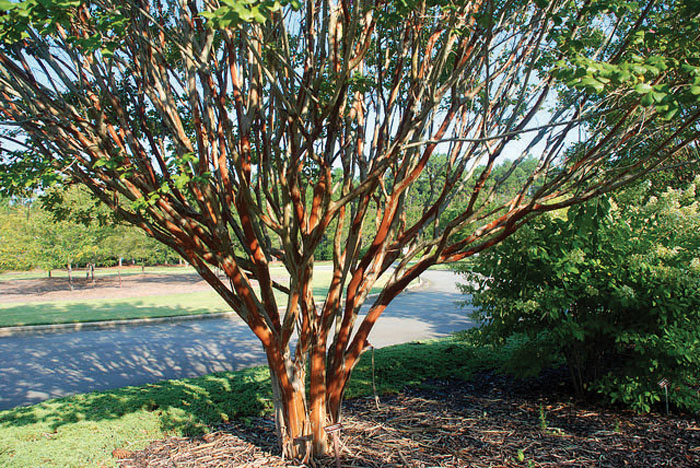Amy-Lynn Albertson: Stop crape murder
Published 12:00 am Saturday, February 17, 2024

- Crape myrtle natural form
By Amy-Lynn Albertson
N.C. Cooperative Extension
Too often, crape myrtles are cut back to bare trunks because this abuse will yield more flowers. This type of severe pruning results in a shorter bloom time, delayed flowering, weaker branching and can increase insect and disease problems. This practice, known as topping, is harmful to all trees and is never the right way to prune a crape myrtle.
Late winter (February-March) is the best time to prune crape myrtles in the Piedmont of North Carolina. Like all trees, the correct way to prune a crape myrtle involves enhancing its natural form rather than trying to force it to grow in a space that is too small or an artificial shape. Crape myrtles naturally grow as small upright or vase-shaped trees with multiple trunks. In a well-pruned crape myrtle, the trunks grow upward and outward, with branches fanning out rather than growing inward into the tree’s center.
To determine if your crape myrtle needs to be pruned, examine the direction in which the trunks and branches grow. Starting at ground level, follow the trunks to where they begin to branch, focusing on the tree’s interior rather than the outer edges. Branches that grow into the tree’s center crossing over other branches or trunks, should be removed.
To remove a branch, follow it to where it joins a larger branch or trunk. Take a close look at the point where the branch joins the trunk. You will notice at the point where the two join, the branch is swollen or enlarged. This area is known as the branch collar. Using a pruning saw, remove the branch by cutting just above the branch collar rather than flush with the trunk. If the branch was removed at the correct place, the branch collar left behind will extend out a centimeter or two from the trunk.
If it has been years since the tree was last pruned, you may have to remove several branches. Whole trunks can be removed by cutting them off as close to ground level as possible, but this results in profuse sprouting of suckers during the summer and should be done only as a last resort.
If you have the time and the tree is not too large, you can clean up the tree’s interior by cutting off small twiggy branches that grow from the main trunks. This is best done using hand pruners. You can also remove seed pods and trim off the ends of branches less than pencil-sized in diameter. While these practices will help the tree look neater and may increase the size of flower clusters, they are not necessary to keep the tree healthy.
Crape myrtle varieties like ‘Natchez,’ ‘Muskogee’ and ‘Tuskegee’ easily reach 25 feet tall or higher with a similar spread. Suppose you have planted a large growing variety in a space that is too small to allow it to mature. In that case, your best option is to move the tree to a different spot and replace it with a more compact selection such as ‘Tonto,’ ‘Sioux’ or ‘Catawba,’ which grow to 15 feet or less.
To learn how to prune a crape myrtle properly, come to the crape myrtle pruning demonstration at the Granite Quarry Civic Town Park at the Tennis Courts on Saturday, Feb. 24, from 9-11 a.m. The town of Granite Quarry and N.C. Cooperative Extension are sponsors of this program. I will be leading a hands-on demonstration on pruning crape myrtles. Please call 704-279-5596 ext 212 to register.
Amy-Lynn Albertson is director of the Rowan County Extension.





